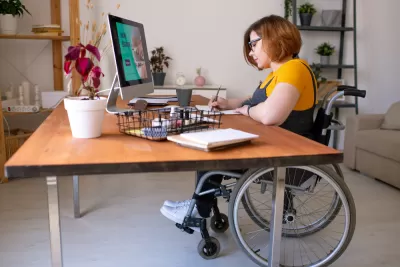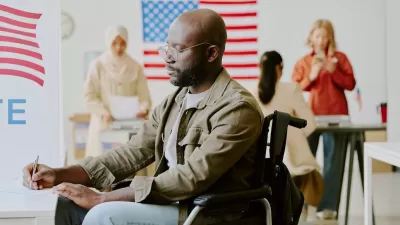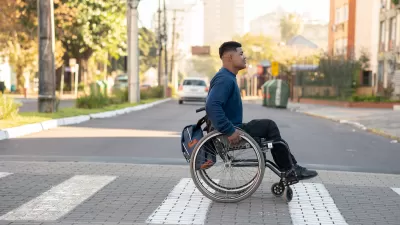The more widespread acceptance of working from home is helping millions of Americans with disabilities get back into the workforce and find better job opportunities.

Despite suffering some of the most severe job losses at the beginning of the pandemic, American workers with disabilities are now gaining from the remote work revolution, writes Molly Smith for Bloomberg, a trend that advocates hope will continue into the future as employers reevaluate the need for physical offices.
“The 42.5 million disabled Americans make up 13% of the civilian population, compared with the nearly 19% that is Hispanic and the almost 12% that's African American, according to 2021 Census data released on Sept. 15.” Many considered their working lives over until working from home became a much more mainstream possibility. According to the article, “The tight-as-a-drum labor market gives employers an incentive to maintain the remote-work benefit for disabled employees, which also helps companies diversify their workforces.”
Smith also notes that long Covid, with its serious and long-term complications, may soon fall under the Americans with Disabilities Act, making the numbers for workers with disabilities even higher. Smith also points out that “Just because a disabled person is working doesn’t necessarily mean that the conditions are fair. There’s a nationwide effort to crack down on the labor certificates, allowed under the Fair Labor Standards Act of 1938, that let companies pay people with disabilities a subminimum wage, but many employers still use them.” An increased focus on workers with disabilities could help further such efforts and make working conditions more equitable for all workers.
FULL STORY: Disabled Americans Reap Remote-Work Reward in Record Employment

Study: Maui’s Plan to Convert Vacation Rentals to Long-Term Housing Could Cause Nearly $1 Billion Economic Loss
The plan would reduce visitor accommodation by 25,% resulting in 1,900 jobs lost.

North Texas Transit Leaders Tout Benefits of TOD for Growing Region
At a summit focused on transit-oriented development, policymakers discussed how North Texas’ expanded light rail system can serve as a tool for economic growth.

Using Old Oil and Gas Wells for Green Energy Storage
Penn State researchers have found that repurposing abandoned oil and gas wells for geothermal-assisted compressed-air energy storage can boost efficiency, reduce environmental risks, and support clean energy and job transitions.

From Blight to Benefit: Early Results From California’s Equitable Cleanup Program
The Equitable Community Revitalization Grant (ECRG) program is reshaping brownfield redevelopment by prioritizing projects in low-income and environmental justice communities, emphasizing equity, transparency, and community benefits.

Planting Relief: Tackling Las Vegas Heat One Tree at a Time
Nevada Plants, a Las Vegas-based nonprofit, is combating the city’s extreme urban heat by giving away trees to residents in underserved neighborhoods, promoting shade, sustainability, and community health.

How Madison’s Tree Planting Efforts Are Growing a Healthier Community
Madison’s annual tree planting initiative is enhancing environmental resilience, public health, and community livability by adding 1,400 carefully selected trees citywide, with strong community and institutional support for urban forestry.
Urban Design for Planners 1: Software Tools
This six-course series explores essential urban design concepts using open source software and equips planners with the tools they need to participate fully in the urban design process.
Planning for Universal Design
Learn the tools for implementing Universal Design in planning regulations.
Ascent Environmental
Borough of Carlisle
Institute for Housing and Urban Development Studies (IHS)
City of Grandview
Harvard GSD Executive Education
Toledo-Lucas County Plan Commissions
Salt Lake City
NYU Wagner Graduate School of Public Service





























